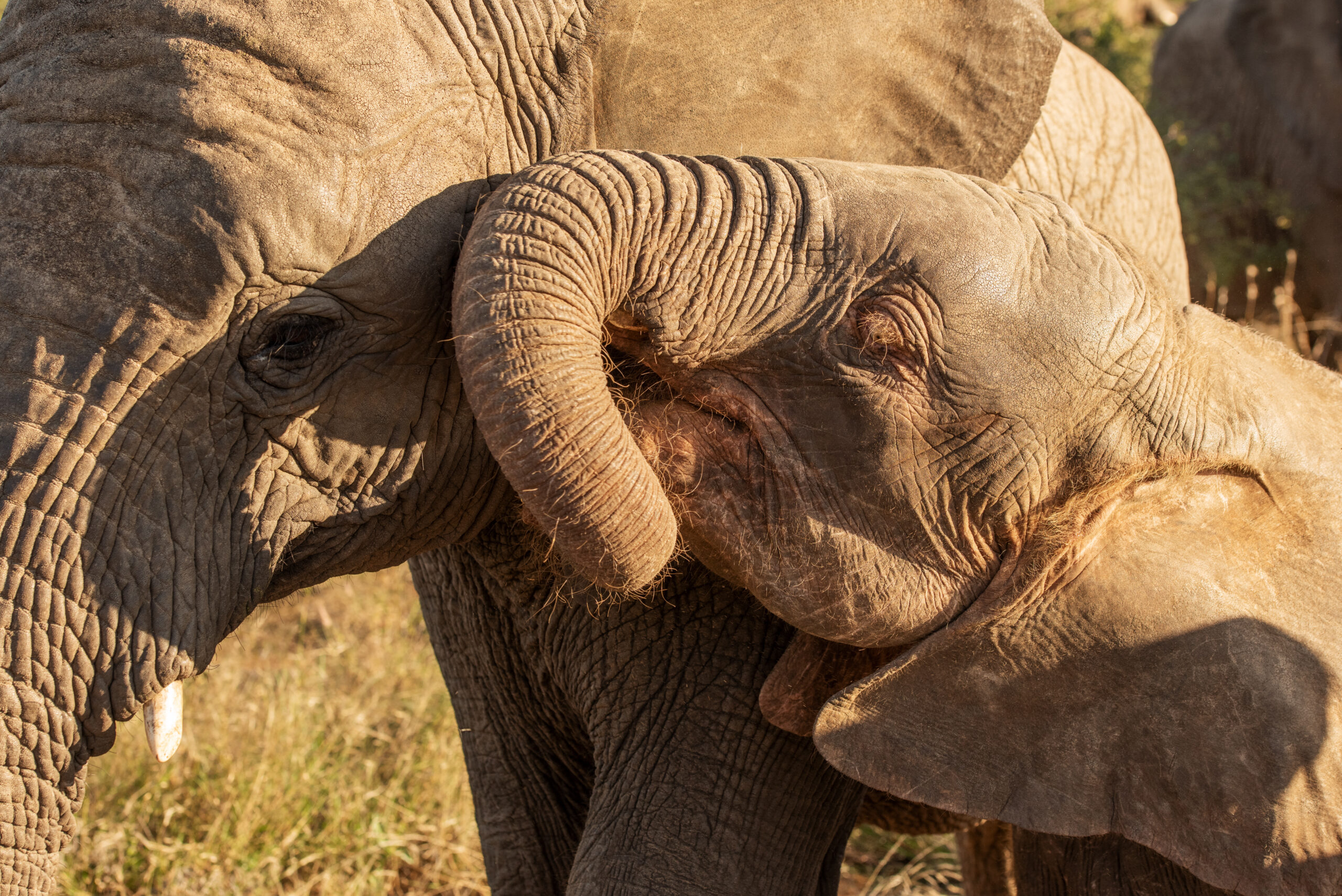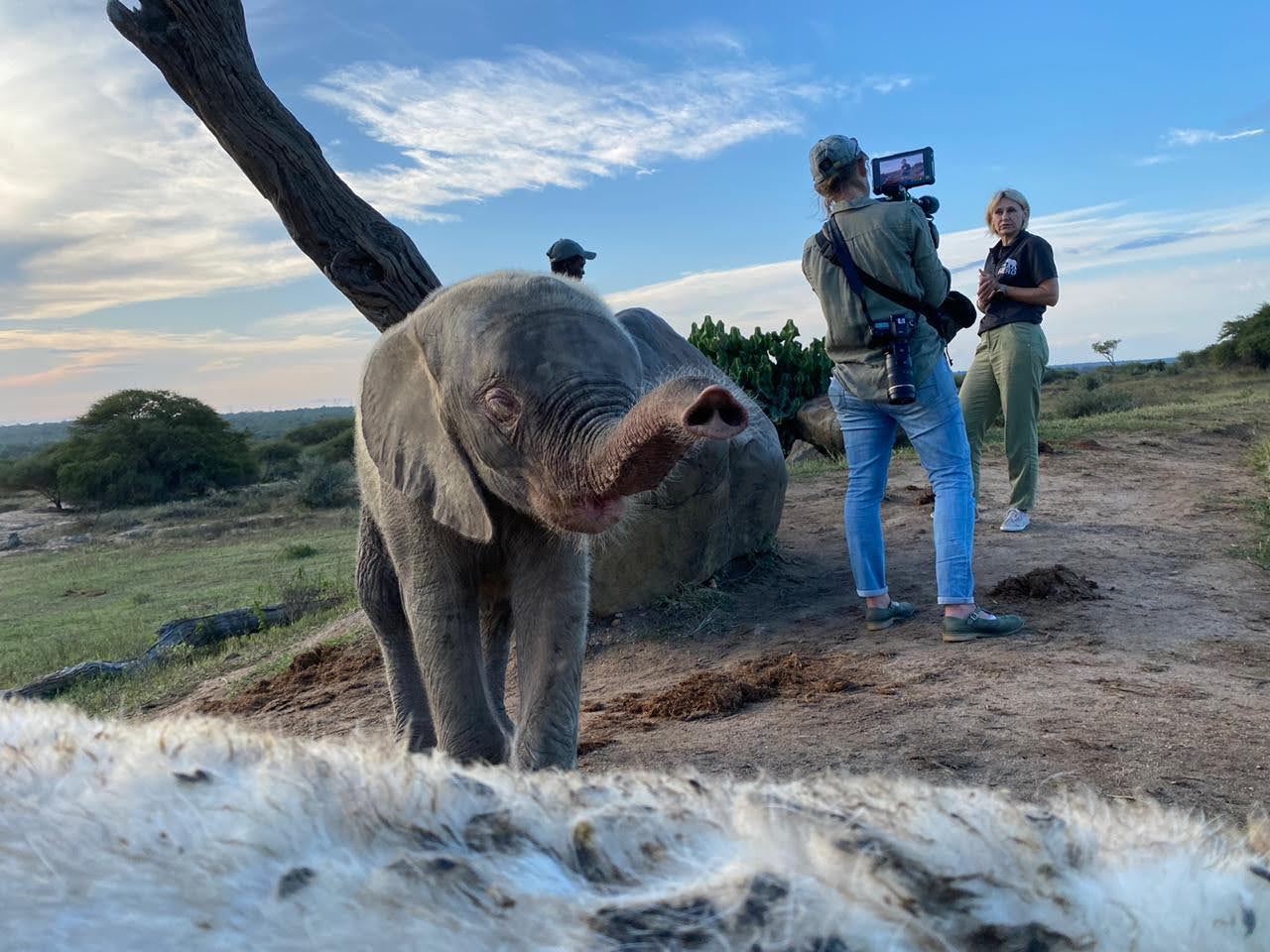Playing it By Ear
An elephant’s ears, with all of the nicks, notches, holes and missing bits is one of a kind and can serve a similar purpose to finger prints. Giant and easily readable reminders of past experiences, tangles with unforgiving thorn trees or opportunistic predators that are unique to each and every African elephant. Young Khanyisa has an unmistakable notch out of the top of her left ear, from the snare that she was caught in, which would certainly help to identify her if she wasn’t already one of the most recognisable young African elephants in the world. Her adoptive mother, Lundi in the Jabulani herd has an equally distinctive tear pattern of her own.
Back in the 1970’s, together with his wife and children, zoologist and leading elephant conservationist, Dr Iain Douglas-Hamilton was given the task of photographing the elephants of Lake Manyara National Park in Tanzania for identification purposes, to compile a ‘rogues gallery’ of the almost 500 elephants in the park. During dominance or threat displays African elephants hold their heads high and extend their ears to create the most imposing and frightening image possible and coincidentally the perfect view for valuable ID photos.
The work on an African elephant ‘who’s who’ continues with many researchers compiling and contributing to data bases that are vital for us being able to track the movements and behaviour patterns of both individuals and herds of elephants that are constantly on the move. Elephant Voices have created eight educational modules listing unique elephant characteristics from their tails to their trunks.
What Elephant Ears are Trying to Tell You
According to Joyce Poole from Elephant Voices, a respected organisation with a wealth of collected elephant research, African elephants use their ears to gesticulate. Where we might square or shrug our shoulders or wave our arms about an elephant would use any of a number of ‘ear gestures’. Ear-spreading, ear-flattening, ear-folding, ear-stiffening and rapid ear-flapping, are all used singly or in combination to signify either aggression or in greeting and bonding situations.
The ear-flap-slide causes the ears to make a rasping sound as they rub downward against the shoulders and are often used as elephant indicators to signify a change in direction while a loud ear-slap can be a sign of annoyance, a bit like a child stamping its foot. Males in musth use their ears to waft their odour toward other elephants.
Keeping Cool
An African elephant’s giant flappers are laced with a network of veins and capillaries that can also be used for identification. If you’re up close and in just the right light the intricate pattern is easily visible, but there is a far more important reason that these blood transporting vessels are so close to the surface.
The radiator of a motor car works by passing engine coolant through thin metal fins, which allows the heat generated by the engine to flow to the outside air moving past the radiator and a fan assists by kicking into action when necessary. A thermostat controls the flow of the coolant.
Amazingly, this is almost exactly the modus operandi employed by an elephant using blood in place of antifreeze coolant. By flapping those giant mud-covered ears and controlling the blood flow through them, elephants can significantly reduce their body temperature, reportedly by up to 9 degrees centigrade.
Standing around in the shade of a tree with a like-minded group of hot pachyderms while stirring up a breeze with those giant fans might be the reason for the external ear, but inside there’s much more going on…
Acoustic biologist Katy Payne, in a ground-breaking study of elephant conversations has actually ‘listened’ to African elephants communicating with sound so low and deep that it is inaudible to humans. By recording the too-deep-to-hear sounds and speeding up the playback she was able to listen in on never before heard elephant natter.
The skull of the African elephant, due to its massive size, allows adequate space for an outer ear canal of about 20 cm in length which, in turn, provides protection for its very large tympanic membrane and large middle ear bones. These special adaptations to low-frequency hearing mean that elephants can hear extremely deep pitched sounds but are deaf to higher pitches.
Read more about the language of elephants here >




 Comment
Comment







